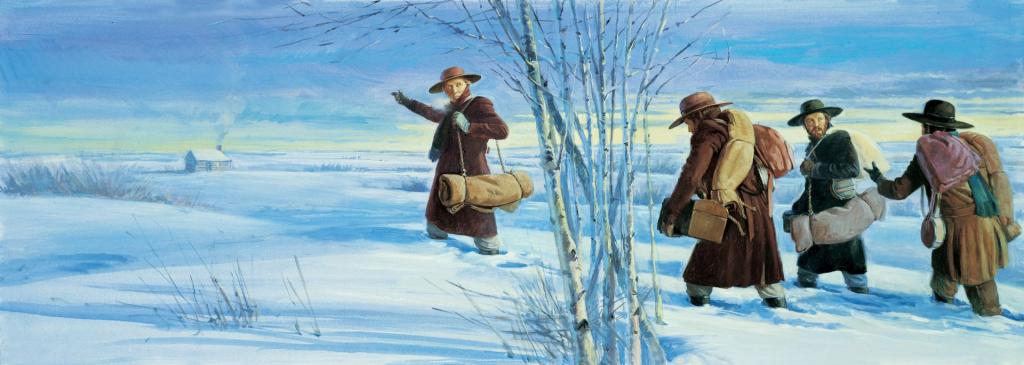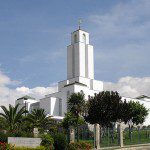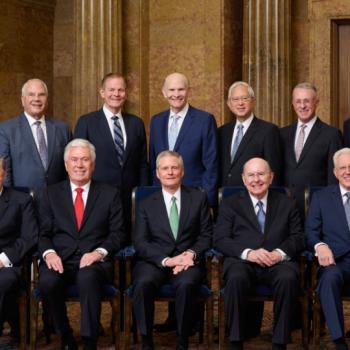
***
Did you miss these articles when they appeared the first time?
Daniel C. Peterson, “Vast Prairies and Trackless Wilds of Snow: A Good Test of Sincerity”
Abstract: Embarking roughly six months after the organization of The Church of Jesus Christ of Latter-day Saints, the 1830–1831 “mission to the Lamanites” faced challenges that we pampered moderns can scarcely imagine. Oliver Cowdery, Peter Whitmer Jr., Parley P. Pratt, Ziba Peterson, and, eventually, Frederick G. Williams demonstrated beyond reasonable dispute the depth of their commitment to the Restoration and to the promises extended by the Book of Mormon to the surviving children of Lehi. Given that Cowdery and Whitmer were witnesses of the golden plates, this demonstration of their genuine belief seems significant.
Abstract: Over 30 years ago, Noel Reynolds compared matching non-Biblical phrases in the Book of Moses and Book of Mormon. Based on this analysis, Reynolds proposed a possible connection between the Book of Moses and hypothetical material on the brass plates that may have influenced some Book of Mormon authors. Reynolds’s work, “The Brass Plates Version of Genesis,” provided potentially plausible explanations for additional relationships between the Book of Moses and Book of Mormon that arose in two later Jeff Lindsay studies: one on the Book of Mormon account of Lehi1’s trail and another on the Book of Mormon’s intriguing use of the ancient theme of rising from the dust. The additional findings and connections presented here strengthen the original case Reynolds made for the ancient roots of the Book of Moses, roots that could have extended to the brass plates and then on to the Book of Mormon. Critics might dismiss such connections by asserting that Joseph merely drew from the Book of Mormon when drafting the Book of Moses; however, this view overlooks significant evidence indicating that the direction of dependence is the other way around. In light of the combined evidence now available, it is time to reconsider Reynolds’s original proposal and recognize the possibility that the Book of Moses is more deeply rooted in antiquity that many have recognized in the past.
[Editor’s Note: This article is based on a presentation by Reynolds and Lindsay made at the Tracing Ancient Threads in the Book of Moses Conference, Provo, Utah, Sept. 18–19, 2020, presented by The Interpreter Foundation, Brigham Young University Department of Ancient Scripture, Book of Mormon Central, and FairMormon. A more detailed version, along with an edited transcript of the question-and-answer session that followed the presentation, can be found in the forthcoming conference proceedings.]
Jeffrey M. Bradshaw, “The Ark and the Tent: Temple Symbolism in the Story of Noah”
Abstract: Jeffrey M. Bradshaw compares Moses’ tabernacle and Noah’s ark, and then identifies the story of Noah as a temple related drama, drawing of temple mysticism and symbols. After examining structural similarities between ark and tabernacle and bringing into the discussion further information about the Mesopotamian flood story, he shows how Noah’s ark is a beginning of a new creation, pointing out the central point of Day One in the Noah story. When Noah leaves the ark, they find themselves in a garden, not unlike the Garden of Eden in the way the Bible speaks about it. A covenant is established in signs and tokens. Noah is the new Adam. This is then followed by a fall/Judgement scene story, even though it is Ham who is judged, not Noah. In accordance with mostly non-Mormon sources quoted, Bradshaw points out how Noah was not in “his” tent, but in the tent of the Shekhina, the presence of God, how being drunk was seen by the ancients as a synonym to “being caught up in a vision of God,” and how his “nakedness” was rather referring to garments God had made for Adam and Eve.
[Editor’s Note: Part of our book chapter reprint series, this article is reprinted here as a service to the LDS community. Original pagination and page numbers have necessarily changed, otherwise the reprint has the same content as the original.
See Jeffrey M. Bradshaw, “The Ark and the Tent: Temple Symbolism in the Story of Noah,” in Temple Insights: Proceedings of the Interpreter Matthew B. Brown Memorial Conference, “The Temple on Mount Zion,” 22 September 2012, ed. William J. Hamblin and David Rolph Seely (Orem, UT: The Interpreter Foundation; Salt Lake City: Eborn Books, 2014), 25–66. Further information at https://interpreterfoundation.org/books/temple-insights/.]
Claudia Bushman, “Resurrection Month”
Abstract: We tend to have big events and a full month celebrating Christmas, but here we are in a very Christian church that has come to almost ignore the events of the crucifixion and the resurrection. The Last Supper and the events that followed it are the important events of the season. With some planning and creativity, we can immerse ourselves in a Resurrection Month by thinking about the gift of life and promise for the future that we have been given, reading the old scriptures, and reliving the life and times of our elder brother and great teacher.
R. Jean Addams, “The Past and Future of the Temple Lot in Independence, Jackson County, Missouri”
Abstract: Fifteen months after the Church of Christ’s inception in April 1830, Joseph Smith received a revelation indicating that Independence, Jackson County, Missouri, was to be the “center-place” of Zion and a “spot for a temple is lying westward, upon a lot that is not far from the court-house.” Dedication of this spot for the millennial temple soon followed on August 3, 1831, by Joseph Smith and Sidney Rigdon. A building sketch was prepared in Kirtland, Ohio, and sent to church leaders in Independence in June 1833. Smith also forwarded his plat for the City of Zion, showing 24 temples at its center and giving an explanation for their use. Tragically, the church was driven en masse out of Jackson County only months later. Reclaiming the original Partridge purchase in December 1831, known as the Temple Lot, became an early driving force for the membership of the church. A physical effort to reclaim the saints’ land and possessions in Jackson County was organized in 1834 by Joseph Smith and became known as “Zion’s Camp.” After traveling 900 miles and poised on the north bank of the Missouri River looking toward Jackson County, Smith’s two hundred armed men were unable to proceed for various reasons. While contemplating what to do, given the reality of their situation, Smith received a revelation to “wait for a little season, for the redemption of Zion.” That poignant phrase — “the redemption of Zion” — became a tenet of the church thereafter. In the years following the martyrdom and the subsequent “scattering of the saints,” three independent expressions of the Restoration returned to Independence to reclaim or redeem the Temple Lot in fulfillment of latter-day scripture. This essay examines their historical efforts.
[Editor’s Note: Part of our book chapter reprint series, this article is reprinted here as a service to the LDS community. Original pagination and page numbers have necessarily changed, otherwise the reprint has the same content as the original.
See R. Jean Addams, “The Past and Future of the Temple Lot in Independence, Jackson County, Missouri,” in Proceedings of the Fifth Interpreter Foundation Matthew B. Brown Memorial Conference, 7 November 2020, ed. Stephen D. Ricks and Jeffrey M. Bradshaw, Temple on Mount Zion 6 (Orem, UT: The Interpreter Foundation; Salt Lake City: Eborn Books, 2021), in preparation. Further information at https://interpreterfoundation.org/books/the-temple-past-present-and-future/.]
Posted from Newport Beach, California











